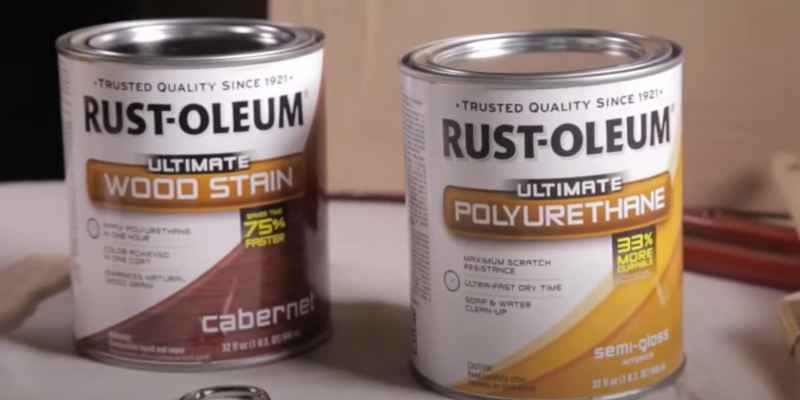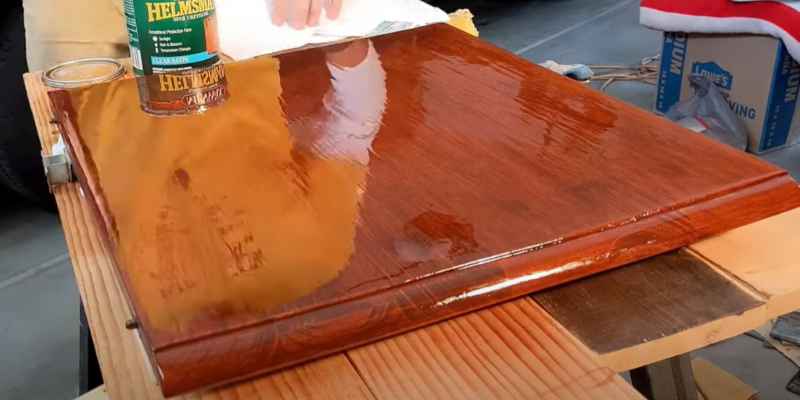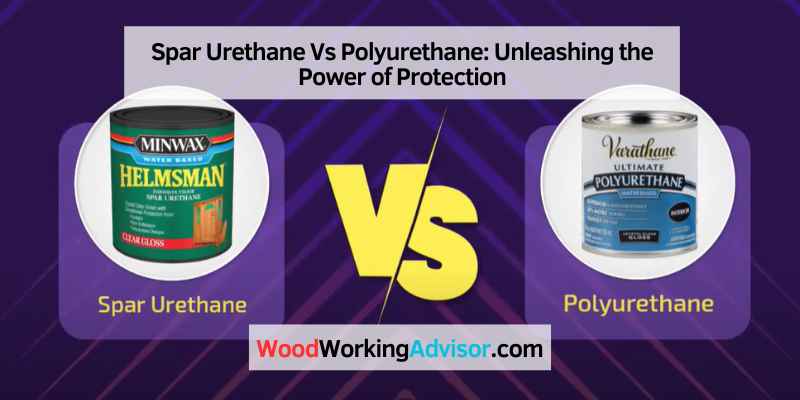Spar urethane and polyurethane are both types of protective coatings used for wood, but spar urethane is especially designed for exterior use, while polyurethane is generally used for interior wood surfaces.
What Is Spar Urethane?
Spar urethane is a type of protective coating that is widely used in woodworking projects, particularly those that are exposed to outdoor elements. It is specifically designed to withstand the harsh conditions of sun, wind, rain, and temperature fluctuations, making it an ideal choice for protecting wood surfaces in exterior applications.
Composition
Spar urethane is made up of various components, including:
- Polyurethane resin: This is the main ingredient in spar urethane and provides the durable, protective coating.
- Solvents: Solvents are used to dissolve the polyurethane resin and help with its application.
- UV absorbers: Spar urethane contains additives that protect the wood from the damaging effects of the sun’s ultraviolet (UV) rays.
- Thinners: Thinners are added to the formula to adjust the viscosity and achieve the desired application consistency.
Application
Spar urethane is commonly used on outdoor projects such as decks, fences, and furniture. Its protective qualities make it an excellent choice for preserving the natural beauty of wood while providing long-lasting durability.
When applying spar urethane, it is essential to follow the manufacturer’s instructions for the best results. The application process typically involves the following steps:
- Clean the wood surface thoroughly to remove any dirt, dust, or previous coatings.
- Sand the surface to create a smooth and even texture.
- Apply a thin and even coat of spar urethane using a brush, roller, or spray gun.
- Allow the first coat to dry completely.
- Lightly sand the surface between coats to ensure proper adhesion.
- Apply additional coats of spar urethane until the desired level of protection is achieved.
- Allow the final coat to cure fully.
Overall, spar urethane is a reliable and robust protective coating that provides excellent resistance against outdoor elements. Its composition and application make it a popular choice for woodworkers and DIY enthusiasts looking to protect their outdoor projects.

What Is Polyurethane?
Polyurethane is a versatile and durable synthetic material that is commonly used as a protective coating for various surfaces. It is a liquid finish that hardens into a tough protective layer when it dries. Whether you need to protect wooden furniture, floors, or even metal surfaces, polyurethane can provide a strong and long-lasting solution.
Composition
Polyurethane is composed of a combination of chemicals that undergo a chemical reaction to form the protective finish. Generally, it is made by mixing two main components: a polyol and an isocyanate. These components react with one another, creating a chemical bond that results in a hard and durable coating.
In addition to the polyol and isocyanate, polyurethane may also contain other additives such as solvents, pigments, and UV inhibitors. These additives enhance the performance and appearance of the polyurethane finish.
Application
Polyurethane can be applied using various methods, including brushing, spraying, or wiping. The application method depends on the surface and the desired finish. Brushing is a common method for applying polyurethane to furniture or smaller surfaces, as it allows for better control and precision. Spraying is ideal for larger surfaces or when a smooth and even finish is required.
Before applying polyurethane, it is important to prepare the surface properly. This typically involves sanding the surface to create a smooth and clean base for the polyurethane to adhere to. Once the surface is prepared, the polyurethane can be applied in thin and even coats.
After application, the polyurethane needs time to dry and cure. This curing process can take anywhere from a few hours to several days, depending on various factors such as temperature and humidity. It is important to allow sufficient drying and curing time to ensure a strong and durable finish.
Differences Between Spar Urethane And Polyurethane
Spar Urethane and Polyurethane are both types of protective finishes used in woodworking. However, they have different chemical makeups that determine their specific characteristics and applications.
- Spar Urethane is typically an oil-based product that contains a combination of natural resins and synthetic solvents. These resins provide a durable and glossy finish.
- Polyurethane, on the other hand, is a synthetic finish that is made by combining chemicals to create a clear, tough, and waterproof coating.
Although both finishes offer protection for wood surfaces, their chemical compositions result in variations in their performance.
Water Resistance
When it comes to water resistance, Spar Urethane and Polyurethane differ in their capabilities.
- Spar Urethane is known for its excellent resistance to water, making it a suitable choice for exterior applications such as doors, outdoor furniture, and decks. It forms a protective barrier that prevents water penetration and helps to prevent wood rot.
- Polyurethane, on the other hand, offers good water resistance but may not be as effective as Spar Urethane in prolonged exposure to water. It is more commonly used for interior applications such as furniture, cabinets, and flooring.
Therefore, choosing the right finish depends on the specific project and the level of water exposure it will encounter.
Uv Resistance
UV resistance is an important factor to consider, especially for outdoor projects that are exposed to sunlight.
- Spar Urethane is designed to provide excellent protection against UV rays, preventing color fading and wood degradation caused by prolonged sun exposure. It contains UV absorbers and inhibitors that help to prolong the life and appearance of the wood.
- Polyurethane, although it provides some level of UV protection, may not be as effective as Spar Urethane in terms of preventing sun damage. It is better suited for indoor use or for projects that will be shielded from direct sunlight.
Therefore, if you’re working on an outdoor project that will be exposed to the sun, Spar Urethane is the recommended choice to ensure long-lasting protection.
Pros And Cons Of Spar Urethane
Spar urethane offers durable protection for external wood surfaces, while polyurethane is better suited for interior use. Spar urethane is resistant to sunlight, heat, and moisture, making it ideal for outdoor applications, but it can be more difficult to apply and may have a longer drying time compared to polyurethane.
Benefits
Spar urethane is a popular choice for outdoor projects due to its durability and weather resistance. Some of the key benefits of using spar urethane include:
1. Long-lasting protection: Spar urethane creates a protective barrier that can withstand harsh weather conditions, such as sunlight, rain, and moisture.
2. Enhanced wood grain: Unlike some other clear finishes, spar urethane enhances the natural beauty and grain of the wood, giving it a rich and warm appearance.
3. UV resistance: Spar urethane contains UV blockers that help to prevent the wood from fading or darkening when exposed to sunlight.
4. Water resistance: This type of polyurethane is highly water-resistant, making it ideal for outdoor furniture, decks, and other wooden structures that are exposed to rain or humidity.
Limitations
While spar urethane offers numerous advantages, it also has some limitations that should be considered before using it for your project. These limitations include:
1. Longer drying time: Spar urethane may require a longer drying time compared to other polyurethane finishes. This is particularly important to keep in mind if you need your project to be completed quickly.
2. Strong odor: Spar urethane emits a strong odor during the application and drying process. Adequate ventilation is necessary when working with this finish to minimize the smell.
3. Less scratch-resistant: While spar urethane provides good protection against weather, it is not as scratch-resistant as other finishes. This means that over time, the finish may become scratched or marred, especially in high-use areas.
4. Higher cost: Spar urethane tends to be more expensive than other polyurethane finishes. This higher cost is due to the additional additives for UV and water resistance.
In summary, spar urethane offers long-lasting protection, enhances wood grain, provides UV and water resistance. However, it has a longer drying time, emits a strong odor, is less scratch-resistant, and comes with a higher cost compared to other finishes. Considering these pros and cons will help you make an informed decision for your outdoor wood projects.
Pros And Cons Of Polyurethane
When it comes to protecting and enhancing the beauty of wood, polyurethane is a popular choice for many DIYers and professionals alike. It offers a durable and glossy finish that can withstand wear and tear. However, like any other product, polyurethane also has its benefits and limitations. In this article, we will explore the pros and cons of using polyurethane as a finish for your wood projects.
Benefits
Polyurethane offers several advantages that make it an attractive option for wood finishing projects:
- Durable protection: Polyurethane forms a strong protective layer that shields the wood surface from scratches, moisture, and UV rays. This ensures that your wood projects maintain their beauty for a long time.
- Easy to apply: One of the main benefits of using polyurethane is its ease of application. Whether you prefer brushing, spraying, or wiping, polyurethane can be applied using various methods, making it suitable for both beginners and experienced users.
- Quick drying time: Polyurethane dries relatively quickly, allowing you to apply multiple coats within a short period. This saves time during your wood finishing process and allows you to complete your project sooner.
- Available in different finishes: Polyurethane is available in various finishes, including gloss, semi-gloss, and satin. This gives you the flexibility to choose the level of shine that best suits your preference and project requirements.
- Long-lasting: Once applied, polyurethane forms a protective layer that can endure heavy daily use without showing signs of wear easily. This makes it an ideal choice for surfaces that are prone to high traffic or frequent contact.
Limitations
While polyurethane offers numerous benefits, it also has a few limitations that you should consider before using it as a finish:
- Not suitable for outdoor use: Although polyurethane provides good protection against moisture, it is not the best choice for outdoor applications. Constant exposure to the sun’s UV rays and changing weather conditions can cause the finish to degrade over time.
- Requires proper ventilation: Polyurethane emits strong fumes during application and drying. It is essential to have proper ventilation in your workspace to avoid inhaling these fumes, as they can be harmful to your health.
- Prone to bubbling: If you are not careful during application, polyurethane may develop bubbles on the surface as it dries. This can affect the overall appearance of your wood project and requires additional sanding and refinishing to correct.
- Difficult to repair: If your polyurethane finish gets damaged or scratched, repairing it can be challenging. Unlike some other finishes, polyurethane cannot be spot-repaired or touched up easily. In most cases, you will need to strip and refinish the entire surface.
In conclusion, polyurethane offers many benefits, such as durable protection, ease of application, quick drying time, and availability in different finishes. However, it is not suitable for outdoor use, requires proper ventilation, can develop bubbles, and is difficult to repair. Understanding the pros and cons of polyurethane will help you make an informed decision about whether it is the right finish for your wood projects.

Frequently Asked Questions For Spar Urethane Vs Polyurethane
What Is The Purpose Of Spar Urethane?
Spar urethane is used to provide a protective coating for wood surfaces. It seals and protects against moisture, UV rays, and general wear and tear. Spar urethane enhances the natural beauty of the wood while prolonging its lifespan.
Does Spar Urethane Yellow Over Time?
Yes, spar urethane can yellow over time due to exposure to sunlight and UV rays.
Does Spar Urethane Make Wood Waterproof?
Spar urethane can provide some waterproofing for wood, but it’s not completely waterproof.
How Do You Get A Perfect Finish With Spar Urethane?
To get a perfect finish with spar urethane, follow these guidelines:
1. Prepare the surface by sanding it smooth and clean.
2. Apply thin coats, using a high-quality brush or applicator.
3. Allow each coat to dry completely before applying the next.
4. Sand lightly between coats to remove any imperfections.
5. Repeat the process until you achieve the desired finish.
Conclusion
To wrap up our discussion on Spar Urethane vs Polyurethane, it’s important to consider your specific needs and preferences. Both options offer unique benefits and drawbacks, so do your research and evaluate the factors that matter most to you. Whether you prioritize durability, protection against weathering, or ease of application, make an informed decision that suits your project requirements.
Ultimately, the right choice will provide a lasting finish, enhancing the beauty and longevity of your woodwork.


